Aloe Vera Compounds

The following information is just for commercial reference, it no pretend to be a medical use or claim, is a recompilation of documents or files of Aloe Vera worldwide, and desires to help to know more about Aloe Vera.
Aloe Vera is packed with vitamins, minerals, polysaccharides, phytosterols, antioxidants, and amino acids, this one plant is as effective for internal concerns as external ones, as relevant to the athlete as to the aging adult, and as popular for looking better as for feeling better.
Aloe Vera is extremely nutritious and safe to eat and eventually consumed as a beverage or juice or externally in hair or body.
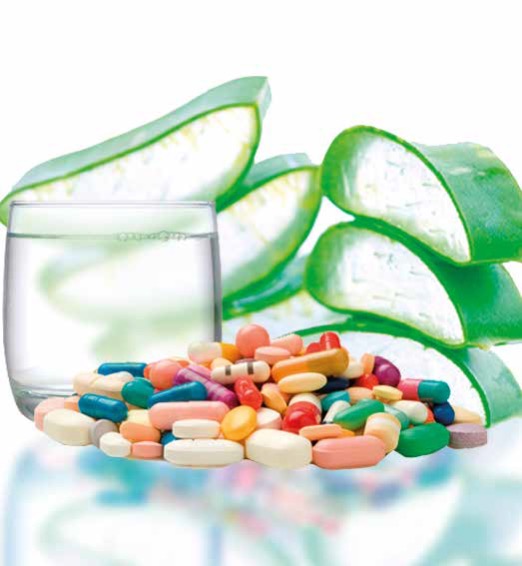
Produced from only the highest Quality.
AMB Wellness pays careful attention to growing, harvesting, and manufacturing our certified organic Aloe ingredients. From seed to finish product, we are dedicated to purity and quality every step of the way.
Our plants are organically grown in the dry climate of Northeast Mexico, with plenty of sun and carefully timed irrigation. The plants are harvested by hand to select only the highest quality three-year-old Aloe leaves, which scientific investigation has found have the highest antioxidant potential. Experienced quality control personnel monitor each step of the production process.
Aloe Vitamins
Aloe Vera Gel contains pro-vitamin A, the eye vitamin. It is rich in antioxidants, and among other things, promotes bone growth and a healthy immune system. Furthermore, Aloe Vera gel contains vitamins B1, B2, B3, B5, B6, vitamin C, and vitamin E and the rare vitamin B12, which is found almost exclusively in foods of animal origin.
Aloe minerals and Aloe Trace Elements
They are implicated because of oxidative stress, occasional leakages from continuous exposure to chemicals, contaminants, and exogenous factors. The pathological disruption of these radicals in human cells could be prevented by quenching the upshot of catalytic activities.
Aloe absorbs from mother nature the most important nutrients from the soil, which are minerals and trace elements, Minerals are nutrients used by the body to build bones and muscles as well as to regulate heartbeat, oxygenation of the body cells, and blood clotting.
Aloe Vera contains important minerals and trace minerals among which are: Potassium, Sodium, Copper, Selenium, Zinc, Magnesium, Calcium, Iron, Silicon
Aloe Aminoacids
Aloe provides nineteen of the twenty-two amino acids that our body needs, seven of which are essential and cannot be synthesized by ourselves, so we must resort to external inputs. They are critical because when combined forms proteins essential for life and very necessary for those who have an intense sport. Also serve, among other functions, as raw material in the production of other cellular products, such as hormones and pigments. Both essential and nonessential amino acids are involved in the formation of neurotransmitters enzymes (chemical messengers), antibodies, and nutrient transporters.
Essential amino acids are histidine, isoleucine, leucine, lysine, methionine, phenylalanine, threonine, tryptophan, and valine. There are two more amino acids in the semi-essential Aloe called: tyrosine and cysteine. Arginine is the major amino acid representing 20% of all amino acids.
Aloe Essential Fatty Acids
Aloe Vera supplies essential fatty acids for growth, reproduction, and good health.
Unsaturated fatty acids are important to every cell in the body for normal growth, especially of the blood vessels and nerves and to keep the skin and other tissues youthful and supple through their lubricating quality. These are nutrients that are invaluable for the production and movement of energy throughout the body, regulation of transportation of oxygen, and are vital in maintaining the integrity of cell structure as well as the unique ability to lower cholesterol levels in the blood.
Aloe Enzymes
Aloe Vera can provide some of the most important vegetable enzymes and basics of human nutrition. Important nutrients and phytochemicals found in plants are absorbed more easily by our bodies — sometimes within minutes –without too much effort on the part of the digestive system. As well, more of the nutrients are absorbed. Enzymes are endogenous catalysts that enable, accelerate, or prevent chemical processes. The enzymes contained in the Aloe Vera gel help with the digestion and absorbing the sugars, proteins, and lipids of our daily food intake. Leading scientists agree that a portion of the enzymes present in Aloe Vera gel can destroy free radicals.
Aloe Phytosterols
Aloe Vera contains a phytosterol/ beta-sitosterol. Beta-sitosterol is a competing sterol that will enter the blood. The body can use and break down beta-sitosterol simply with no side effects. As a result, the dangerous LDL cholesterol will pass out of the body without doing damage. With time – our body would produce less LDL cholesterol and so the levels will drop. There are three Aloe Vera gel sterols that were able to reduce inflammation by up to 37%.
Aloe sterol includes campesterol, β-sitosterol, lupeol, and cholesterol which are anti-inflammatory in nature, help in reducing inflammation pain, and act as a natural analgesic.
Aloe Lipids
Essential oils are antiseptic, bactericidal, and can act against viruses. There are no side effects and germs do not develop resistance to them. Gibberellin (a plant growth hormone) in Aloe increases wound healing by increasing protein synthesis. Aloe Vera and gibberellin: anti-inflammatory activity in diabetes. The activity of gibberellin-like substances possibly plays a major role in the wound healing and anti-inflammatory activity of Aloe Vera.

Aloe Chromones
It has been reported that the agents responsible for the anti-inflammatory action are chromones and sterols because they inhibit prostaglandin synthesis and reduce lymphocyte migration and infiltration. Moreover, glycoproteins block antigen binding to the receptors on mast cells’ surface, thus reducing histamine release and leukotriene synthesis and secretion.
Furthermore, the phenol compounds fraction contributes to modulating inflammation, because of its antioxidant action and its inhibitory action on leukocyte metalloproteinases, which reduce the deleterious effects of these mediators. Other gel components also involved in the anti-inflammatory action are magnesium lactate, which inhibits histidine decarboxylase and consequently, the conversion of histidine into histamine in mast cells, and salicylates, which inhibit prostaglandin production from arachidonic acid by inhibiting cyclooxygenase. Research studies have demonstrated that both commercially available Aloe gel and Aloe extract significantly inhibit arachidonic acid oxidation in vitro.
Aloe Flavonoids
Flavonoids contain a defense mechanism protecting us from the damage of sun rays further protecting us from diseases. These so-called secondary plant compounds have a very broad-spectrum effect on human health. In contrast to the primary plant compounds such as carbohydrates, proteins, and fats, they consist of very different compounds that can develop pharmacological effects even with low dosages. Bioflavonoids activate certain enzymes and are anti-inflammatory and antioxidant. Isoflavonoids act as estrogen and can inhibit the growth of certain cancers.
Aloe Vera is an excellent example of a functional food that plays a significant role in protection from oxidative stress, is helpful in the smooth functioning of the body machinery.
Aloe Lectins
Aloe has two enzymes: Aloctin l and ll. Lectins, fractions of Aloe Vera gel, directly inhibited the cytomegalovirus proliferation in cell culture, perhaps by interfering with the protein synthesis Antiviral activity of Aloe Vera. Lectins are a type of protein that can bind to cell membranes. Lectins offer a way for molecules to stick together without getting the immune system involved, which can influence cell-cell interaction. Lectins are resistant to human digestion, and they enter the blood unchanged; Lectins are thought to play a role in immune function, cell growth, cell death, and body fat regulation. Because we don’t digest lectins, we often produce antibodies to them.
Almost everyone has antibodies to some dietary lectins in their body. This means.
our responses vary. Certain foods can even become intolerable to someone after an immune system changes, or the gut is injured from another source. The presence of lectins can stimulate an immune system response.
Aloe Tannis
Tannins are one of the Aloe Vera properties that some of us know little about. They inhibit the growth of harmful intestinal bacteria and play a big role in the healing of burns. Tannins have antioxidant properties that can help prevent cellular damage. This means that it can add in helping to reduce the risk of cancer and heart disease. Tannic acids are Aloe Vera properties that are worth mentioning. They contain the opposite electrostatic charge of the outer shell of viruses. This allows them to magnetically crack these microorganisms to some extent. Tannins are substances – defense compounds – tannins inhibit the growth of bacteria and fungi on their surface.
Aloe Saponins
Saponins are natural anti-fungal agents which inhibit the growth of bacteria,
viruses and fungi. They increase the concentration of antibodies in the blood, lower cholesterol, and normalize blood sugar concentration. Saponins also increase mineral absorption helping the neutralization process of acidic waste, improving digestion, and helping in achieving overall wellness. Aloe Vera contains saponins. These are soapy substances from the gel that is capable of cleansing and having antiseptic properties. The saponins perform strongly as antimicrobial against bacteria, viruses, fungi, and yeasts. The plant sterols or phytosteroids in Aloe Vera include Cholesterol, Campesterol, Lupeol, and B (Beta sign) Sitosterol. Plant steroids have fatty acids in them that have antiseptic, analgesic, and anti-inflammatory properties. Saponins glycosides form approximately 3% of the Aloe Vera gel. Saponins contain antiseptic properties and are capable of cleansing.
Saponins are naturally occurring substances – sparkling microorganisms – with anti-inflammatory, antiseptic, and cleansing properties. With a strong antimicrobial activity against bacteria, viruses, fungi, and yeasts while stimulating the immune system.
Aloe Lignins
Aloe Lignins is responsible that allowing Aloe Vera gel to penetrate deep into the tissues of the skin, through all seven layers. This is especially of importance when trying to heal skin conditions Salicylic acid and other antiprostaglandin compounds may be responsible for Aloe’s local anti-inflammatory activity, possibly due to an inhibitory effect on the arachidonic acid pathway via cyclooxygenase. Lignin is a cellulose-based substance. It has no known medicinal properties, but it is this that is thought to enable Aloe Vera, when applied topically, to penetrate through the human skin to the dermis layer where new skin cells are made.
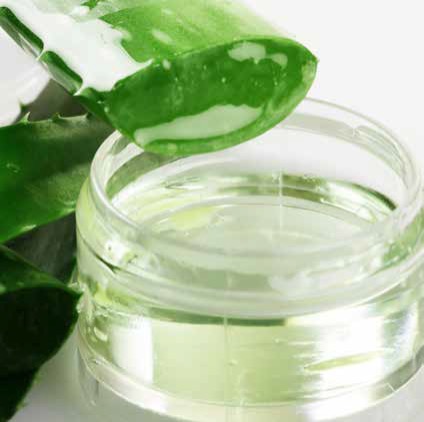
Aloe phytohormones
Aloe contains as other plants, hormones or Phytohormones are organic compounds that are synthesized in a particular part of a plant and then conveyed to other parts. Even in low concentrations, phytohormones can regulate the growth and development of plants, as well as affect their ability to differentiate cells and tissues. Phytohormones affect the plants’ ability to respond to environmental stimuli. They are also responsible for the plant’s longevity and death, time of flowering, as well as in the development and ripening of fruit.
Aloe Organic Acids
Aloe Vera contains organic acids (Malic acid, Succinic acid, p-Coumaric acid
Uronic acid, Uric acid, Cinnamic acid, and Fumaric acid), with beneficial effects on the prevention of the disease, can raise the body’s metabolism of sugar and protein and are carried out smoothly.
Aloe Monosaccharides and Polysaccharides
Aloe contains monosaccharides and polysaccharides. – Monosaccharides and polysaccharides have anti-inflammatory, antibacterial, antiviral, anti-mycotic, and immune-stimulating effects. These properties enhance digestion and bind numerous detrimental substances such as cholesterol and gall acid. Most importantly are the long chain sugars (especially the polymannan sugars) which enter the intestinal wall undegraded and then have an immune regulating effect in the blood. Or they stick to the intestinal wall and therefore prevent undesired substances from entering the bloodstream. The most important ingredient is acemannan which cannot be produced by adults. It supports the immune system, is anti-inflammatory and bolsters the digestive system in its absorption of vital substances. As an example, the following substances belonging to this group were found in Aloe Vera gel: Acemannan, aldopentose, arabinose, cellulose, galactose, galacturonic acid, glucuronic acid, glucose, hexanoic acid, mannose, mannuronic acid, pentosan, rhamnose, uronic acid, and xylose. Aloe carbohydrates were thought to serve mainly as an energy source for the body, but it is now recognized that many carbohydrates play key roles in enhancing immune function and in facilitating cellular communication.
Polysaccharides, now more commonly called glycosaminoglycans, are a special form of polysaccharide. They are made in the human body and perform many key functions in our health, including promoting growth and enhancing the immune system.
Aloe polysaccharides are known scientifically, to boost your brain power, improve your digestion, and your moods, and maximize your immunity. Polysaccharides seem to be essential to the needs of every cell in the body. Increasing your consumption of them through diet and supplementation could lead to restored health.
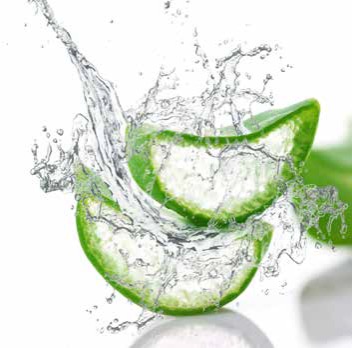
Share it on:
Latest News
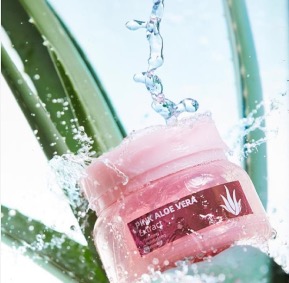
Aloe Vera Pink
Pink Aloe Vera Gel is extracted from the usual Green Aloe Vera, focusing on helping stress skin damage, hyperpigmentation, whitening, and moisturizing products. It comes with an assortment of goodness such as vitamins, antioxidants, and other components such as polysaccharides, tannins, phenols, flavonoids, and sterols that are helpful for the skin, and rich in hydration.
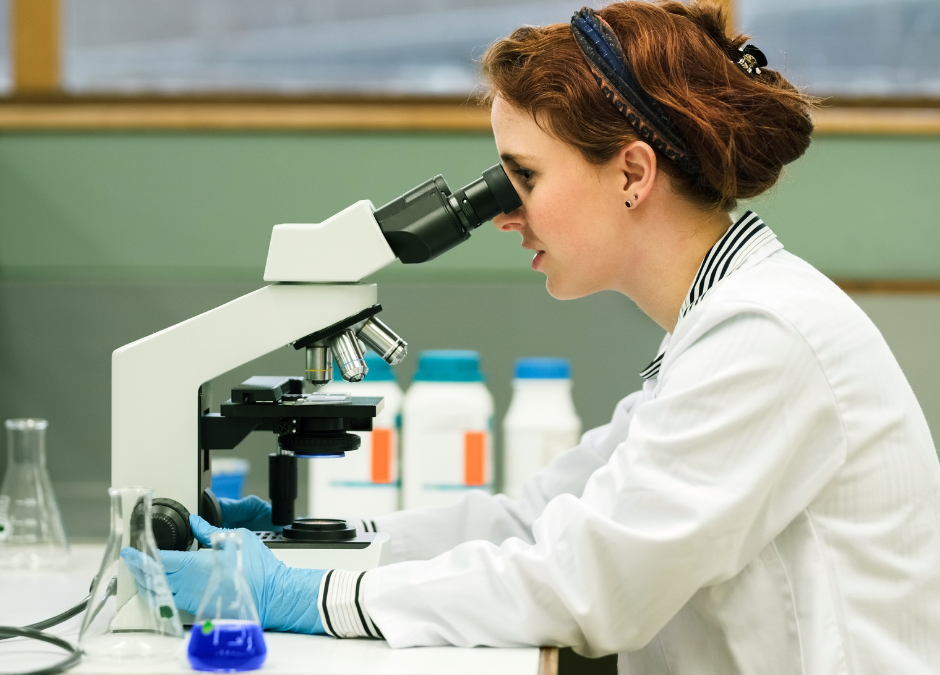
Aloe Vera FAQS
Looking to elevate your products with high-quality organic ingredients? Check out our FAQ section to get all your burning questions answered about incorporating Aloe Vera gel concentrates, spray-dried powders, and various aloe-based formulations into your cosmeceuticals, personal care, dietary supplements, and nutraceuticals. Discover the benefits of using certified organic ingredients for sustainable, effective, and natural raw materials that cater to eco-conscious consumers in the health, beauty, and wellness industries.

Oral Care with Aloe!
Aloe extracts, such as aloe vera juice and gel, deliver vitamins C & E, antioxidants, and hydrate the skin, enhancing it elasticity with regular application. As a natural moisturizer it brings oxygen to the skin, strengthening it from within. Furthermore, growing consciousness among consumers on personal grooming has led to the development of natural and organic skincare and cosmetic industry, consequently paving the way for the market.

